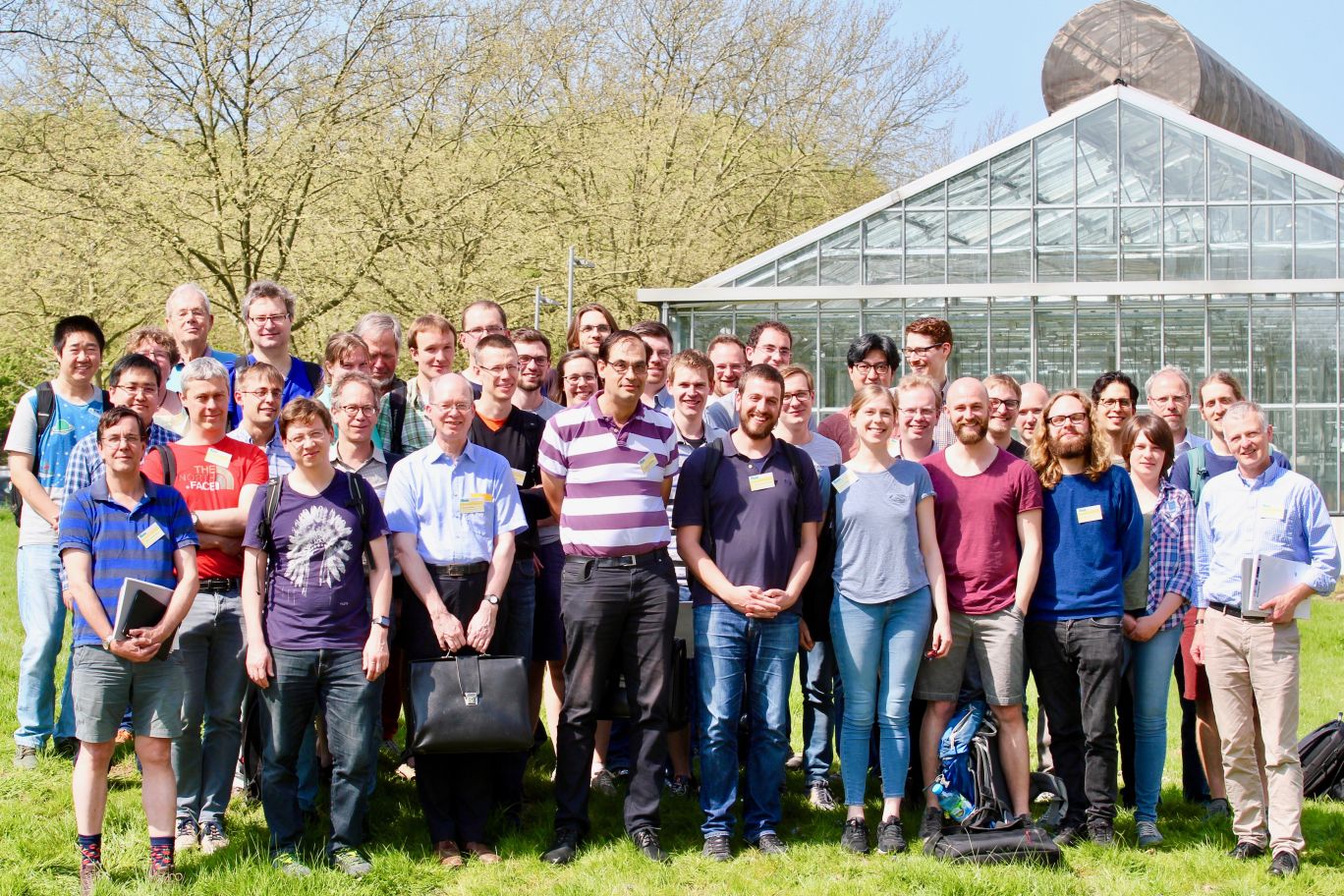Workshop "Discrete Categories in Representation Theory"
Friday 20 April and Saturday 21 April 2018
There was a workshop on discrete categories in representation theory at Bielefeld University.
Location: Bielefeld University, all talks were given in room V2-210/216.
Schedule: Please see the detailed programme.
Organisers: Bill Crawley-Boevey, Henning Krause
Funding: The workshop was supported by the the Alexander von Humboldt Foundation in the framework of an Alexander von Humboldt Professorship endowed by the Federal Ministry of Education and Research.
Workshop Speakers
Workshop speakers included:
- Andre Beineke (Bielefeld)
- Grzegorz Bobinski (Toruń)
- Nathan Broomhead (Plymouth)
- Frédéric Chapoton (Strasbourg)
- Christof Geiss (Mexico/Bonn)
- Bernhard Keller (Paris)
- Rosanna Laking (Bonn)
- Steffen Oppermann (Trondheim)
- David Pauksztello (Lancaster)
- Claus Michael Ringel (Bielefeld)
- Alexandra Zvonareva (St. Petersburg)
Abstracts for the talks are available on a separate page.
Workshop participants:
This picture is avalable in medium resolution (1.2 MB), and in full resolution (4.8 MB).
What is a discrete category?
Discrete categories arise naturally in representation theory of algebras. Roughly speaking, "discrete" means there are no continuous families of objects. Here, we consider additive categories that are defined with respect to some base field, and discreteness should be preserved under base change, so that we have a notion of discreteness also for finite fields. The term "family" refers to a collection of objects that yield some fixed class in the Grothendieck group.
For the category of modules over a finite dimensional algebra, the notions "discrete" and "finite representation type" coincide. This is not true more generally. For example, when one considers completed path algebras of quivers, then categories of representations arise, which have infinitely many isomorphism classes of indecomposable objects but no continuous families of indecomposables. Uniserial categories (or tubes) are typical examples. Further examples arise via covering theory. More abstractly, given an abelian length category, there are two parameters: the height (supremum of the Loewy lengths of the objects) and the number of simple objects. When both are finite, then "discrete" and "finite type" coincide. If one or both of these parameters are infinite, then a category is discrete if and only if any closed subcategory of finite height and with finitely many simple objects is of finite type. In this more general situation no homological description of discreteness seems to be known.
In a different direction, discrete categories arise as derived categories of modules over finite dimensional algebras. This means that there are only finitely many indecomposables when one fixes a class in the Grothendieck group. Such algebras have been classified by Vossieck in his celebrated paper "The algebras with discrete derived category". More examples of discrete triangulated categories exist, but no clear notion of discreteness emerged in this context so far.
There are further notions of discreteness in representation theory. We can restrict ourselves to certain relevant subcategories, say maximal Cohen-Macaulay modules over a Gorenstein algebra, or modules with a good filtration over a quasi-hereditary algebra. Often such subcategories are exact categories that are defined in homological terms. Or one considers other invariants, say the poset of tilting objects, and asks when this invariant is discrete. In fact, it seems that discreteness arises often in connection with objects having no self-extensions. For instance, a finite dimensional hereditary algebra is of finite (equivalently, discrete) representation type precisely when all indecomposable modules are exceptional. In a similar vein, discreteness seems to reflect non-commutative aspects of representation theory, since families of representations usually occur from an embedding of modules over commutative algebras.
Contact
If you have any questions about the conference, please contact the organisers at birep.
